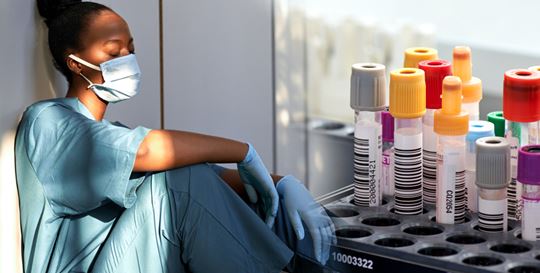In a 2018 episode of the ABC series Grey’s Anatomy, the need for high-sensitivity troponin testing became a reality for the show’s characters.
Amid her day-to-day tasks, character Dr. Miranda Bailey realizes she is suffering from a heart attack and presents herself to the local hospital to get medical assistance. Though Dr. Bailey insists on a getting cardiac tests ordered, the doctor treating her focused on Miranda’s prior OCD diagnosis and called in a psych consult.
Unfortunately, this scenario is a reality for many. According to a study done by the European Society of Cardiology, chest pain is misdiagnosed in women more frequently than in men.i Heart attack symptoms may present differently in women than in men, paving a gap for potential missed myocardial infarctions (MIs).

 English
English





